Excerpts from Jim Conrad's
Naturalist Newsletter
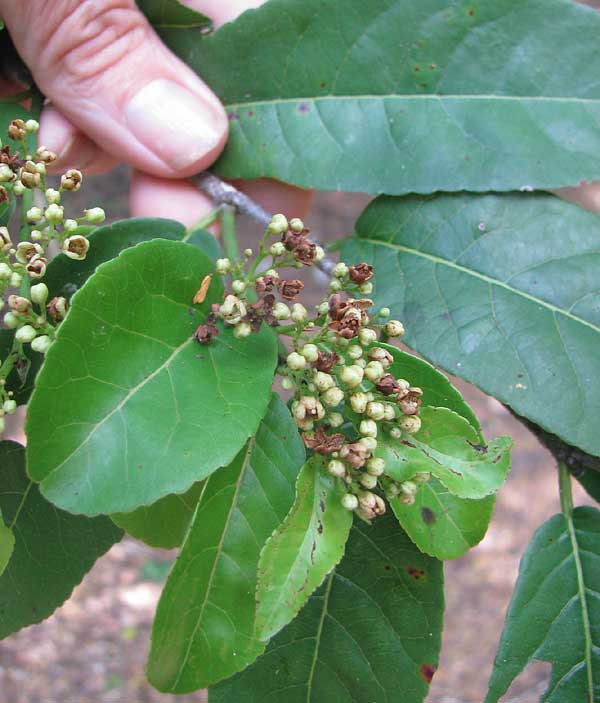
from the January 10, 2010 Newsletter issued from Hacienda Chichen Resort beside Chichén Itzá Ruins, central Yucatán, MÉXICO; limestone bedrock, elevation ~39m (~128ft), ~N18.52°, ~W95.15°
CASEARIA'S PELLUCID DOTS & LINES
Few woody plants are flowering during our early dry season. The small, white flowers and wavy or crenate-margined leaves of one tree bucking the trend is shown above. A close-up of that tree's B-B-sized flowers, which are a little unusual because they lack corollas so that their scoop-shaped, white sepals, or calyx lobes, perform petal service instead, is seen below:
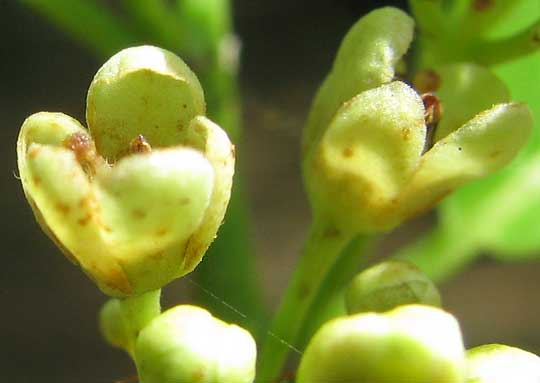
I'm not sure why so many of the flowers are turning brown and shriveling up. I suspect it's a disease or insect damage because other flower pictures on the internet don't show anything similar.
If you hold one of its leaves up against the sun, you see the interesting details revealed below:
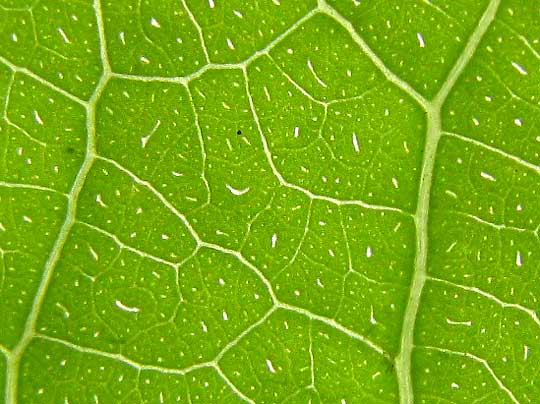
There you see a typical leaf's venation, but within the green areas between veins, the "lacunae", you see lots of bright dots and streaks. Several plant families display such dots -- the Citrus Family (Rutaceae), the Myrtle Family (Myrtaceae) foremost among them. However, those curved streaks are extraordinary. Botanists say that such translucing points are "pellucid." This pellucid dotting and streaking is fairly common in the Flacourtia Family.
Usually pellucid dots are glands filled with aromatic oils. Crush such leaves and typically they emit a pungent fragrance. Casearia nitida's leaves aren't particularly fragrant, though. Still, I suspect that they're filled with chemicals repulsive to insects.
from the August 13, 2017 Newsletter issued from Rancho Regensis north of Valladolid, Yucatán, MÉXICO;
elevation ~40m (~130 ft), N~20.876°, W~88.170°
CASEARIA FRUITING
This week as I was climbing our new cement water tower I looked into the forest canopy and saw the interesting visual composition shown below:
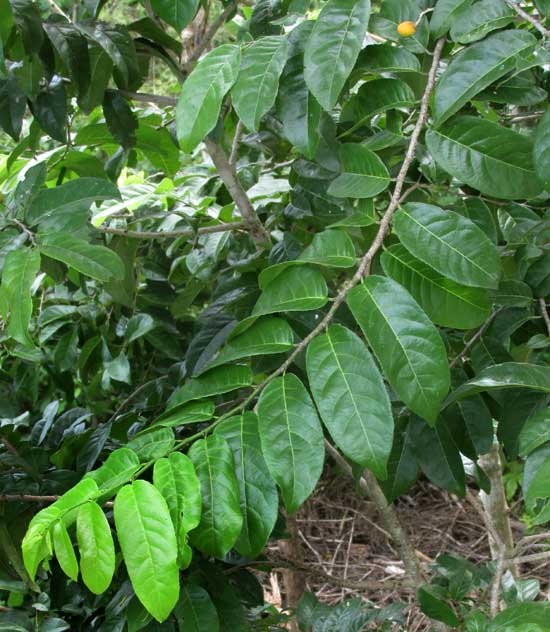
Not many trees line their leaves up so neatly along their branches, alternating them and keeping them in one plane. And look at the orange, cherry-like fruit at the top right. A cluster of several such fruits shows something unusual about their arrangement, as seen below:
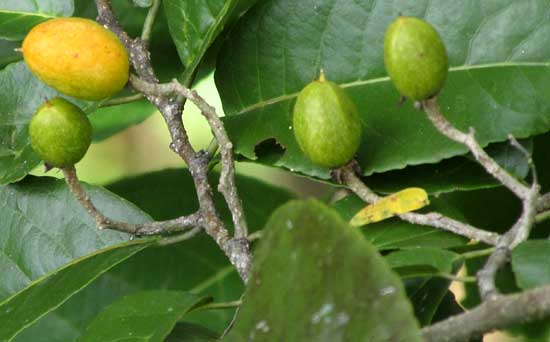
In contrast to those fruits, a cherry, for instance, bears beneath it a slender, pliable stem known as a pedicel, but here the fruit appears to arise from gnarly wood. I'm unsure what anatomists would say about this, but the appearance is distinctive. A broken open fruit showed what appeared to be three potential seeds, each in its own carpel, as seen below:
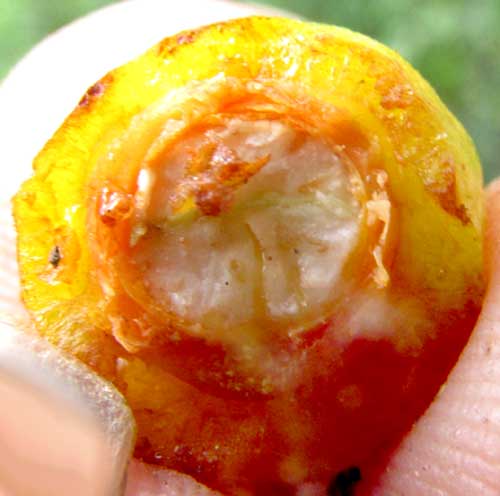
At first I couldn't place this species, but then something about the leaves encouraged me to hold the leaf against the sun and look closely with my handlens, and I saw what's shown below:
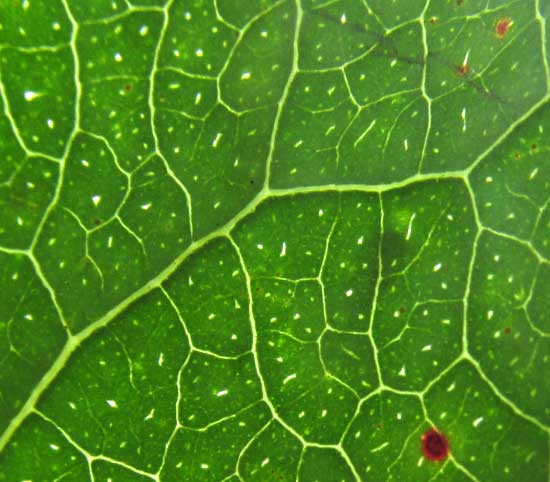
Several plant families are capable of producing those pale or "pellucid" dots, especially the Citrus and Myrtle Families, but those elongated pellucid lines appearing with the dots is something special. When I see them, I think of the tropical Flacourtia Family, the Flacourtiaceae. And remembering that, I realized that I've already described this tree in its flowering state, as you can see above.
So, now we know what the small, warty flowers of Casearia corymbosa develop into.
from the September 28, 2018 Newsletter issued from Rancho Regenesis in the woods ±4kms west of Ek Balam Ruins; elevation ~40m (~130 ft), N~20.876°, W~88.170°, central Yucatán, MÉXICO
FRUITS MAKING BIRDS HAPPY
Nowadays the fruits are maturing, and partially eaten fruits and empty husks litter the ground below the trees. Below, some fruits are shown in various stages of disrepair:
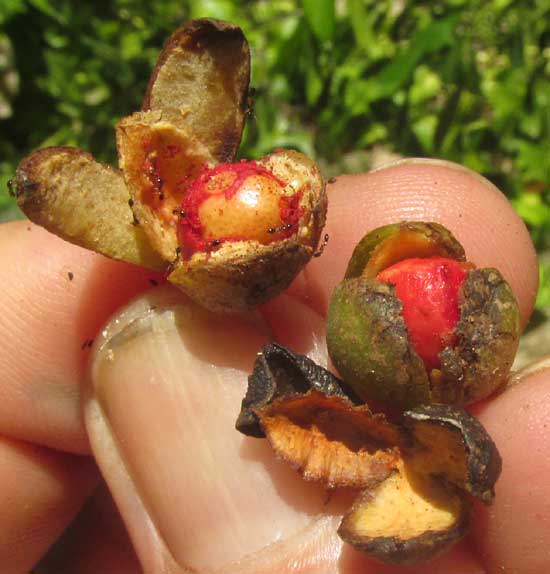
Below, another shot shows that certain fruits do non-standard things:
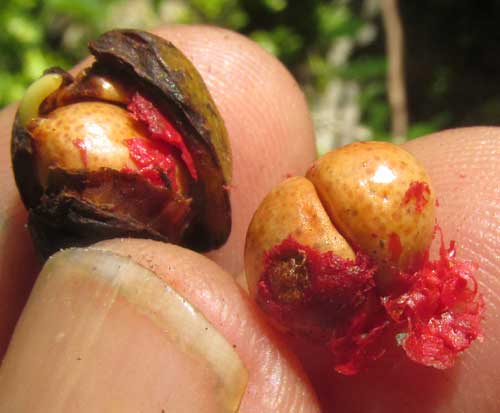
Atop the exposed seed at the top left, a green sprout has formed, apparently because recent rains have kept the seed moist. This suggests that the seeds are ready to germinate as soon as they hit the forest floor. At the picture's bottom, right, two seeds have formed in a fruit that normally produces only one seed.
I was surprised that the fruits' husks split into three parts, to reveal such a red seed coat thinly covering a shiny, orangish seed. Judging from the many birds of various species gather in fruiting trees nowadays, the red seed coat does a good job attracting their attention, and encouraging them to swallow the whole seed, carry it away in their intestines, and plant it in poop deposited at some new location. But it's apparent that some birds just peck at the red seed coat, exposing the seed but not carrying it away.
Anyway, nowadays so many of these seeds litter the forest floor, and the trees are so common, that it's clear that the system functions very nicely.